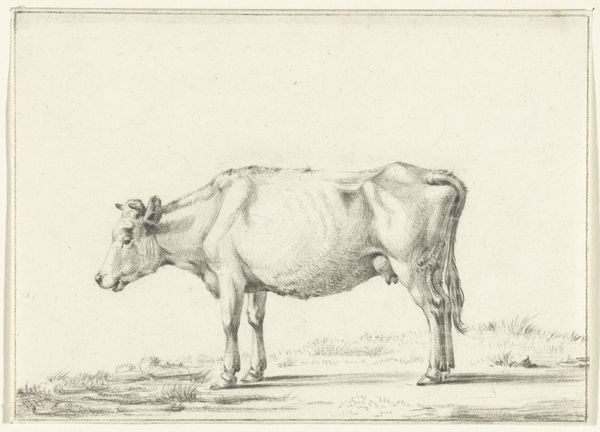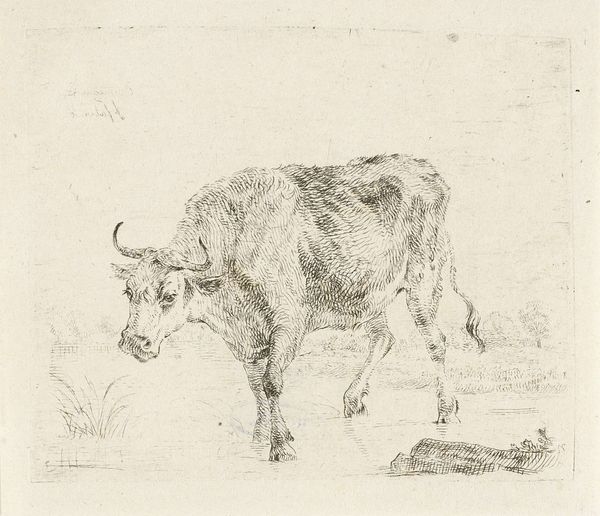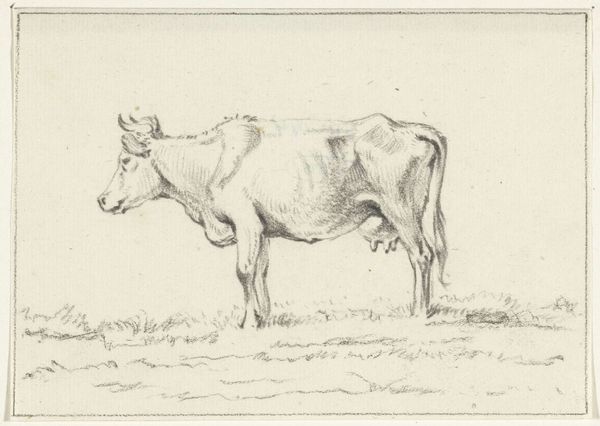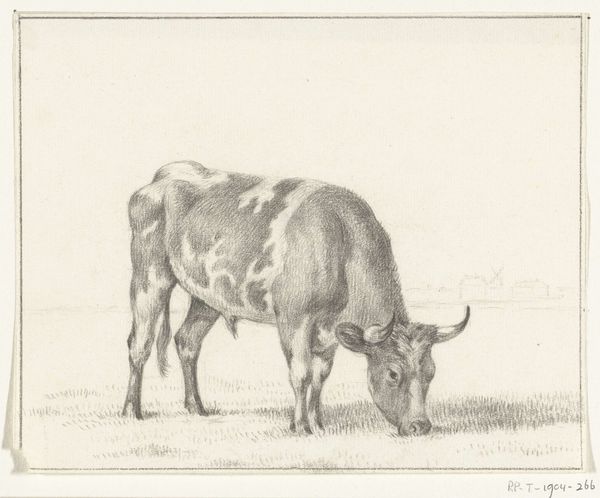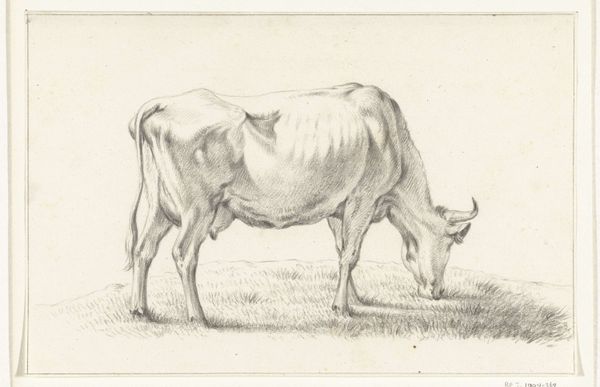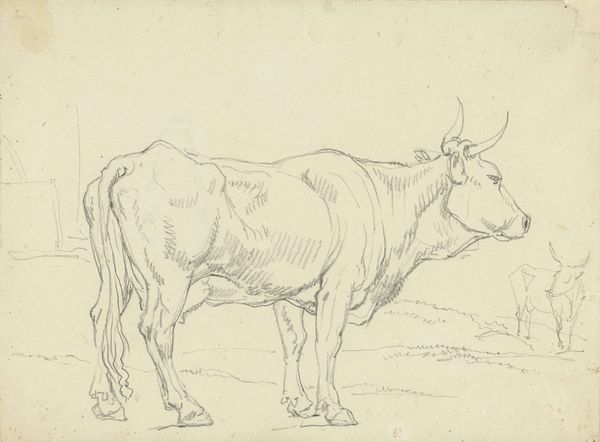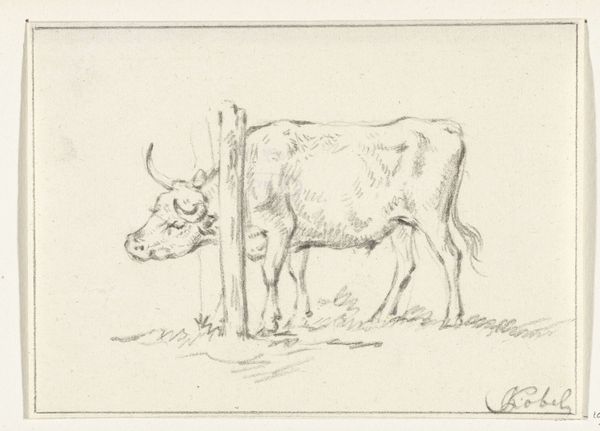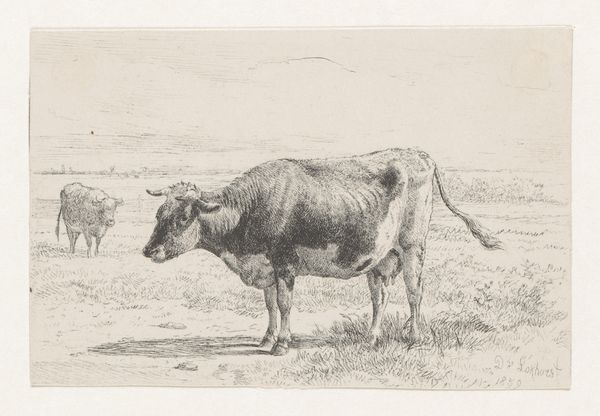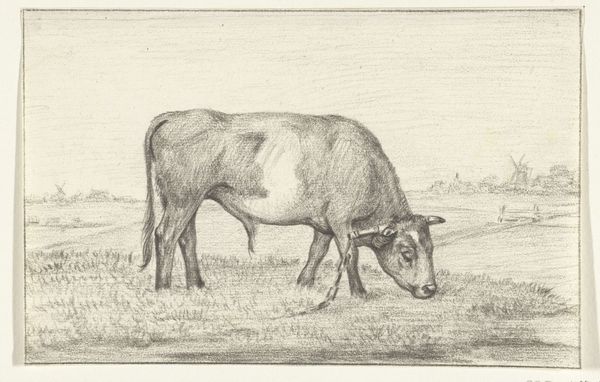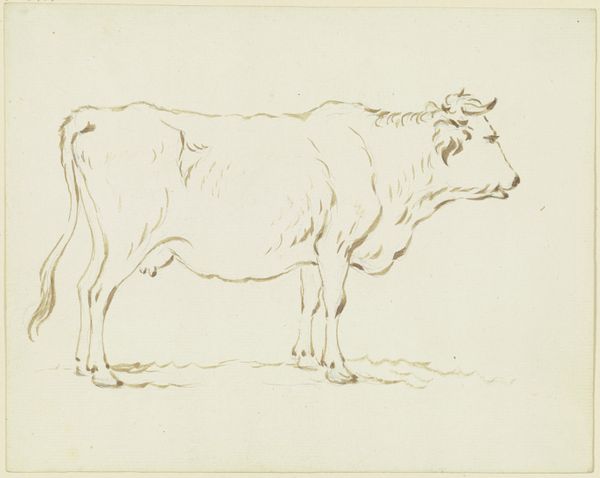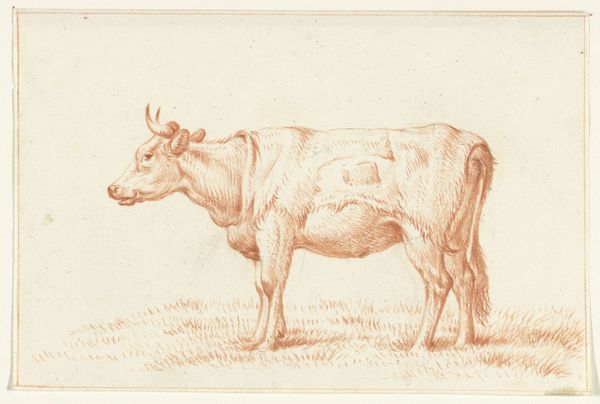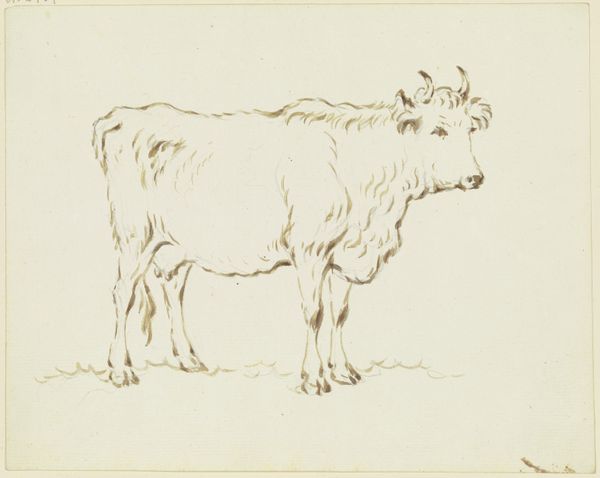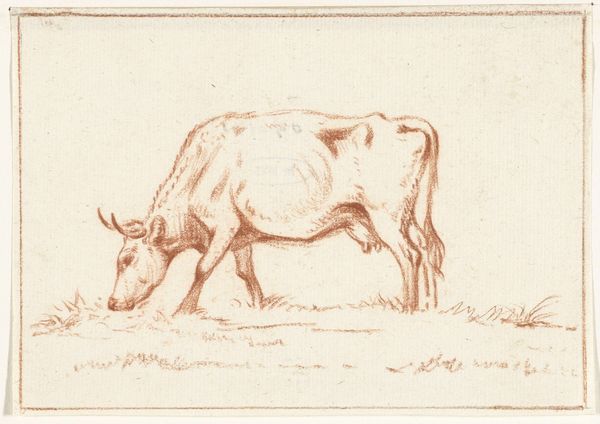
drawing, pencil
#
pencil drawn
#
drawing
#
pencil sketch
#
landscape
#
pencil drawing
#
romanticism
#
pencil
#
realism
Dimensions: height 155 mm, width 190 mm
Copyright: Rijks Museum: Open Domain
Editor: This is "Koe, staande in een plas," or "Cow, Standing in a Puddle," made with pencil in 1827 by Eugène Verboeckhoven. There's such a sense of stillness to it; it feels very quiet and calm. What do you see in this piece? Curator: I see a powerful connection to pastoral traditions and a longing for simpler times. Think about the historical context – 1827. This drawing emerges in the wake of industrialization, and this bovine form acts as a kind of symbol. A cultural memory of agrarian life. What emotions does this evoke for you? Editor: It definitely feels nostalgic, even though I've never lived on a farm! It's like tapping into a collective memory of a pre-industrial world. But why a cow? Curator: Exactly! The cow itself becomes a loaded symbol. It represents sustenance, fertility, the rhythm of nature, even a kind of peaceful contentment. Verboeckhoven wasn't simply depicting a farm animal; he was invoking an entire way of life increasingly threatened by the changes sweeping Europe. And think about the puddle… Editor: You're right; it's not just standing; it's interacting with nature, grounding it. I hadn't really considered that before. Curator: The puddle is transformative! It offers reflection, doubling the image. It is not just what is present; consider also what has been and might no longer be…a quiet memory that is nearly washed away. It becomes a point of connection. Editor: It makes you consider where it fits in history differently! Curator: Indeed. A quiet but persistent reminder of what is valued and perhaps slowly vanishing, even now. A simple cow becomes a potent symbol.
Comments
No comments
Be the first to comment and join the conversation on the ultimate creative platform.
